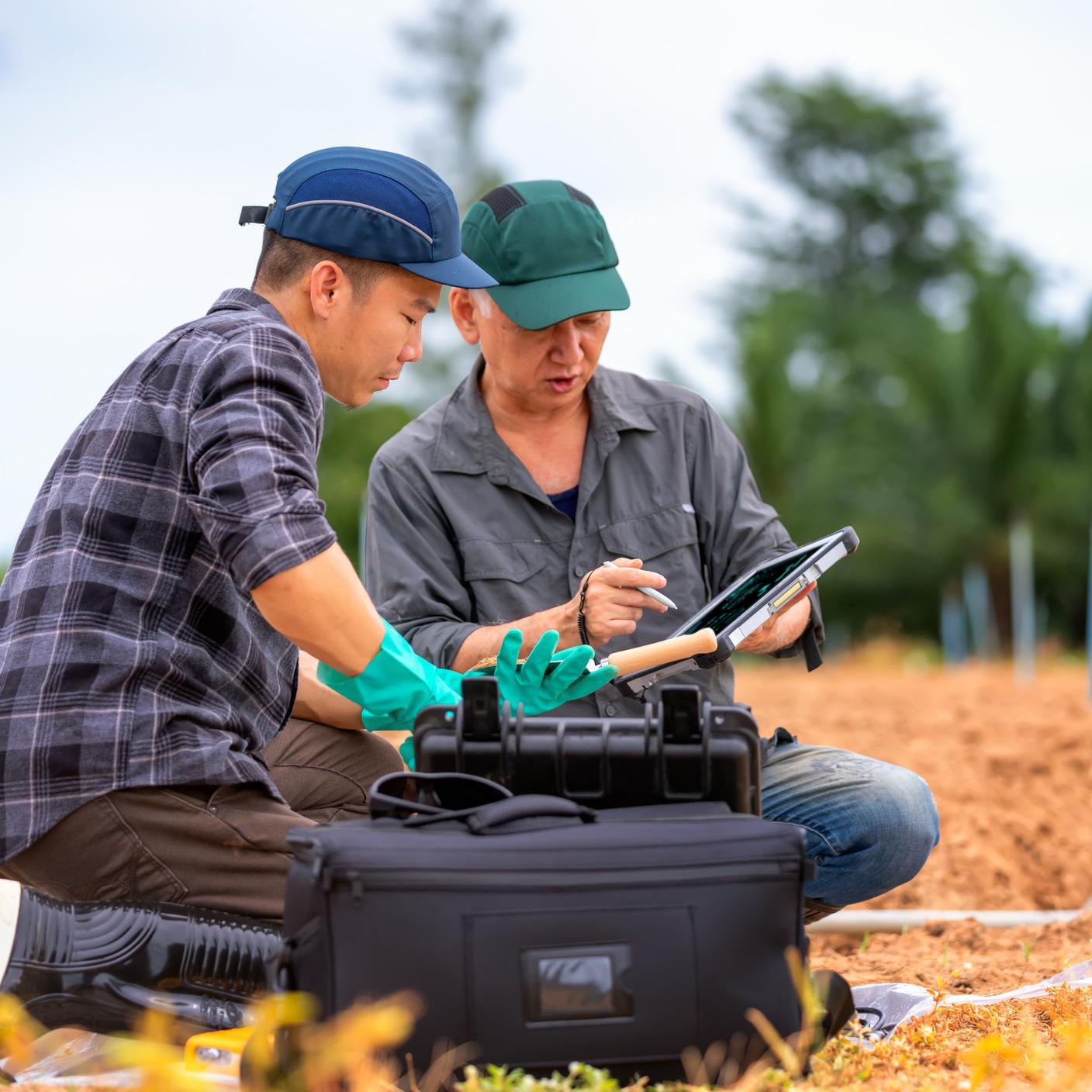Executive summary
The world is moving incredibly quickly in some respects – AI and technology continue to evolve, and dramatically change aspects of how we work, particularly in the food and luxury fashion arenas.
In other respects, the world moves slowly; at least a lot more slowly than many of us would like. Topics such as regenerative agriculture, the prioritization of food safety standards, and the need to get true transparency across the supply chain are perennial issues that we still haven’t truly resolved.
In this review of 2025, Todd Redwood, BSI’s Global Managing Director – Consumer, Retail and Food, highlights some new innovations that have emerged during the year, some key developments across many important issues – and discusses some of those challenges that need urgent attention.
Awareness of regenerative agriculture grows – but decisive action is still needed
The topic of regenerative agriculture certainly isn’t a new one – in fact, it’s one that’s rooted in earliest farming practices. But today it’s getting increasing attention as agricultural processes are a factor that’s preventing many businesses in the food and luxury fashion sectors from hitting their ESG targets.
From the chemicals used to the topsoil being stripped, many current farming processes aren’t conducive to sustainability.
Studies show the nutrient quality of some foods has declined significantly, due to a range of factors including a move away from traditional farming methods. This then has a consequential impact on human health.
This is a topic of conversation that will continue for many years, however this year at least we’ve seen some leadership from brands.
In the luxury fashion space, for example, we’ve seen companies this year switching to suppliers that employ regenerative agricultural practices, which will hopefully pave the way for others to follow suit, and create an environment in which switching to regenerative processes is possible and appealing.
A major missing piece here is there is no single, globally-agreed standard for regenerative farming. It means different things to different industries in different countries. Creating that standard is an imperative, and until that’s in place, I believe we’ll struggle to create meaningful change.
Continued demand for harmonization in food safety standards
The unification of food safety standards in an increasingly globalized food sector is a huge issue, and this year we’ve seen the FDA’s Human Foods Program progress and actively pursue formal agreements with other countries, and discussions continue across the world.
The challenge here is that many businesses still fail to take food safety as seriously as they should. It should be given the same priority as employee health and safety, but rarely is. Until there’s a change in mentality at c-suite level, true change will struggle to happen.
The Human Foods Program is a step in the right direction though. Of course, this won’t be a quick fix, but for global manufacturers it’s smart to ensure that internal protocols are in line with the highest standards, not just to improve business today, but to ensure that when regulation and legislation truly spans globally, you’re in pole position to lead, rather than racing to meet a deadline. PAS 320:2023 is the ideal starting point to implement a robust food safety culture – boosting risk management and lifting consumer confidence at the same time.
Supply chain scrutiny continues to rise
Greater transparency across the supply chain in consumer and retail, and food has been a talking point for a while now – and the conversation has evolved and grown this year.
In the luxury sector, for example, we’ve seen Italian courts use a measure called judicial administration to oversee luxury brands found to be complicit in labour exploitation within their supply chains. We’re likely to see that evolve into other countries and other sectors in the coming months and years, as it becomes abundantly apparent that ignorance regarding ESG compliance is no defence.
Quite simply, the brand selling goods to the consumer is responsible for their suppliers. It doesn’t matter if it’s tier one suppliers or tier four suppliers – you have to be 100 percent certain where your components are coming from.
Technology can be a major help here, and in 2025 we saw more digital traceability tools come to the fore to help businesses achieve this. The application of Hyperledger Fabric blockchain in a pilot project, for instance, dramatically reduced the time needed to trace the provenance of mangoes from seven days to a remarkable 2.2 seconds.
It’s not easy and not simple, but a combination of desktop work and on-the-ground investigation is needed to prove beyond doubt that your ESG credentials do stand up.
Tariffs impact ingredient availability and pricing
Regardless of the sector you’re operating in, the ‘Trump Tariffs’ have been big news – so much so that US trade policy has emerged as the top geopolitical concern among global Food and Agriculture (F&A) business leaders in 2025, placing it above longer-term issues like the war in Ukraine or Red Sea shipping disruptions.
The tariffs have impacted margins throughout the supply chain, and creates pricing pressure – which likely increases the risks of malpractice in certain areas of the supply chain.
Volatile costs become commonplace
During 2025 there were significant ups and downs for businesses to contend with, many of which impacted production and supply.
Outside of politics, droughts in Europe reduced olive harvests, causing olive oil prices to skyrocket, and flooding in regions like South Brazil decimated yields for crops such as wheat and corn, while severe droughts led to over $11 billion in crop losses in regions like the US Southwest and Texas.
Food businesses today are reimagining how their physical inventory strategies provide the agility necessary to capture market opportunities presented by extreme price fluctuations, while the volatility is also impacting trading terms, particularly in emerging markets. Businesses need to rethink sourcing geography and inventory strategy to ensure a steady supply.
AI takes steps to reducing food waste
Food loss and waste is a topic that many are familiar with, and this year we’ve seen significant strides in the use of artificial intelligence (AI) and technology, both of which play a critical role in the equation.
AI-assisted quality control has shown to produce remarkable operational efficiencies, converting what have traditionally been subjective and labour-intensive processes into objective, rapid inspections.
Through the use of technologies like hyperspectral imaging, we’re able to prevent spoilage and enhance supply chain responsiveness. Shelf life predictions are enabling retailers to better manage logistics based on real-time quality data, and moving beyond an arbitrary expiration date.
The impacts of reducing food loss and waste are well documented, but with return on investment for businesses being a compelling $14 return for every $1 spent on reducing food loss and waste, there’s little reason not to act.
The regulations introduced this year in various regions will help the food sector take steps in the right direction, and hopefully we’ll look back on 2025 as being the year we truly started to tackle food loss and waste.
But sustainability drives uncertainty across the food and drink sector
Research conducted towards the end of 2025, however, spotlights significant discrepancies across the food and drink sector with regard to sustainability initiatives – with almost half of organisations believing their approach to sustainability is ‘leading or progressive’ and 39% believing its reactive or minimal.
Businesses believe they’re struggling with sustainability in a number of areas, including DEI, waste management, ethical sourcing, renewable energy/energy efficiency, scope 3 emissions, regenerative agriculture, water stewardship and packaging innovation.
The cost – and return on investment – was highlighted as a key barrier, as were supply chain complexities, measurement challenges, leadership buy in and concerns about greenwashing.
These figures demonstrate it’s time for food and drink organizations across the world to have a measured, structured approach to sustainability initiatives – working with companies like BSI to put in place measurable practices that deliver positive outcomes across the business.
Digital trust needs to be earned – and caution is urged amid growing cyber threats
However, while AI and Generative AI (Gen AI) have become more commonplace throughout the sector, they’ve also introduced some significant governance, ethical and cybersecurity risks.
As often happens when new technologies become available, the speed of deployment often outpaces the capacity to create rules and regulations, creating significant governance blind spots.
This year, we’ve seen the rise of agentic commerce, such as the integration of major retail platforms like Walmart directly into Gen AI models – and that’s no surprise. Recent research from BSI has shown that 61% of business leaders globally state that boosting productivity and increasing efficiency is an AI investment driver.
Gen AI systems also introduce significant risks to enterprise security, however, including the potential for Gen AI-produced phishing attacks and malicious code, which adds to a growing cyber security issue being faced by all areas of business.
This is part of a broader issue around trust, which is underlined by BSI research. We found 67% of business leaders would trust AI tools more if there was increased transparency around the data they use, and 54% would trust AI tools more if they were validated by an external organization.
And yet, only 24% of organizations have an AI governance program in place – which demonstrates the significant gap we need to bridge.
The food sector is a particular target, with bad actors holding access to physical and virtual facilities to ransom. In 2025, we saw attacks on Japanese brewer Asahi, US food manufacturer United Natural Foods (UNFI) and the UK’s Co-Op group, to name just a few.
Manufacturing is the top targeted sector globally. These threats are significant, and can be fatal. It’s essential businesses prioritize cybersecurity, as well as having the right guardrails in place when using AI.
Consumer expectation on authenticity, transparency and ‘free from’ increase
During 2025, we’ve seen a deep focus from consumers on health, value and authenticity, with a persistent and non-negotiable demand for clean, transparent labeling.
Consumers are actively prioritizing products that are free from artificial ingredients and deliver clear functional benefits, specifically high protein and fiber content, coupled with low sugar and sodium. Younger consumers exhibit even sharper preferences: 25% of Gen Z consumers rate non-GMO status as highly important, 19% prioritize organic, and 13% seek allergen-free products.
The alternative protein market has grown rapidly. However, while plant-based proteins lead the way (36% of consumers express interest), wider adoption is still impeded by barriers including taste dissatisfaction, price premiums and consumer concerns over ultra-processed ingredients.
The hybrid generation bring workforce challenges
Over the past few years, hybrid and remote working has become much more common, with 48% of people now working remotely. This brings about challenges – for example, surveys have found people want to be paid more for working from an office, while there are a number of people who’ve entered the workforce over the past five years who’ve never known anything but hybrid and remote work.
Our report, Evolving Together: Enabling The Hybrid Generation To Flourish At Work, surveyed 4700 people globally, who started work during or since the pandemic.
The study found 63% of people believed roles requiring a full time presence on site should be paid more, while less than 15% preferred a fully remote role. Health and well-being is enhanced by a hybrid role, said 55% of respondents, while 39% of those working in food would not consider a new job requiring full time presence on site.
Of course, many jobs in food and luxury fashion manufacturing cannot be done remotely, and this creates questions about whether we will have the workers needed to produce food in the future.
This year, we’ve seen organizations spending increasing amounts of time understanding changing worker expectations, and considering how workforce changes will evolve over the coming years.
A major element of this is establishing an age-diverse workforce, and lifting ‘the second glass ceiling’. According to BSI research, a fifth of women say they expect to retire before the official retirement age of their country, and 42% say it’s still uncommon to see older women in leadership positions.
Flexibility, more support around maternity, return to work, and perimenopause or menopause, as well as pay parity, are cited as key factors in helping women remain in work.
How robotics and AI play into this too is an intriguing factor, and will continue to be a topic of intense discussion.
CPG companies in a major state of change
In recent months, we’ve seen the likes of Nestlé and Unilever streamline operations and cut jobs – and of course the demerger of Heinz and Kraft.
Throw into the mix Mars and Kellanova’s merger, and Ferrero’s purchase of WK Kellogg, and it’s all too evident the sector is in a state of significant flux.
How this plays out will be followed keenly, as it could have significant ramifications across the food sector. Mergers and acquisitions are challenging to manage smoothly, and this topic will be a one to keep an eye on over the coming months.
Looking ahead to 2026
As we look ahead to what the next decade holds, we’re going to see seismic change across many sectors. It’s going to be a decade full of opportunities for those organizations set up to seize them, and by having the right foundations in place businesses can take full advantage.







